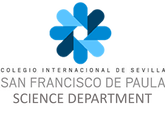The Immune System
The body’s defence against disease: our immune system.
As we come in contact with pathogenic micro-organisms,sporadically, they don’t always enter our body and/ or develop into an illness. We have an immune system that helps us fight diseases. There are two main types of defences against disease:
* External or passive: Avoiding the entrance of the pathogen inside the organism.
- Physical barriers, such as the skin or mucus secreting cells.
- Biochemical barriers, such as the enzymes in our tears, or the acid in our stomach.
- Ecological barriers, such as the intestinal flora.
- Mechanical barriers, such as mucus.
As we come in contact with pathogenic micro-organisms,sporadically, they don’t always enter our body and/ or develop into an illness. We have an immune system that helps us fight diseases. There are two main types of defences against disease:
* External or passive: Avoiding the entrance of the pathogen inside the organism.
- Physical barriers, such as the skin or mucus secreting cells.
- Biochemical barriers, such as the enzymes in our tears, or the acid in our stomach.
- Ecological barriers, such as the intestinal flora.
- Mechanical barriers, such as mucus.
* Internal or active: organisms or pathogens that have crossed the external defences and are inside the body are removed or destroyed by white blood cells, which form part of the immune system. These potential pathogens have particles on their surface called antigens, and these are recognised and destroyed by phagocytes (unspecific immune response) and by antibodies (specific immune response).
In unspecific response, phagocytes (type of white blood cells) engulf and destroy the pathogen with digestive enzymes. There are many phagocytes present in areas of the body likely to suffer infection. E.g. the exposed surfaces of the lungs.
In specific response B-lymphocytes (type of white blood cells) produce specific antibodies, protective proteins specific to one antigen. These antibodies are able to recognise the antigens found on the surface of pathogens, bind to them and facilitate their destruction by other cells.
In unspecific response, phagocytes (type of white blood cells) engulf and destroy the pathogen with digestive enzymes. There are many phagocytes present in areas of the body likely to suffer infection. E.g. the exposed surfaces of the lungs.
In specific response B-lymphocytes (type of white blood cells) produce specific antibodies, protective proteins specific to one antigen. These antibodies are able to recognise the antigens found on the surface of pathogens, bind to them and facilitate their destruction by other cells.
Follow this link to investigate defending against infection in the human body, and watch this video to learn more about antobodies.
Link to the above quiz if it doesn´t work for you here: QUIZ

